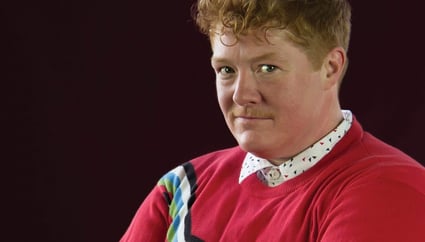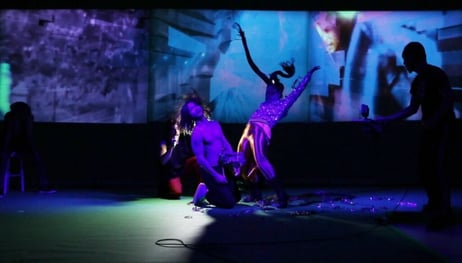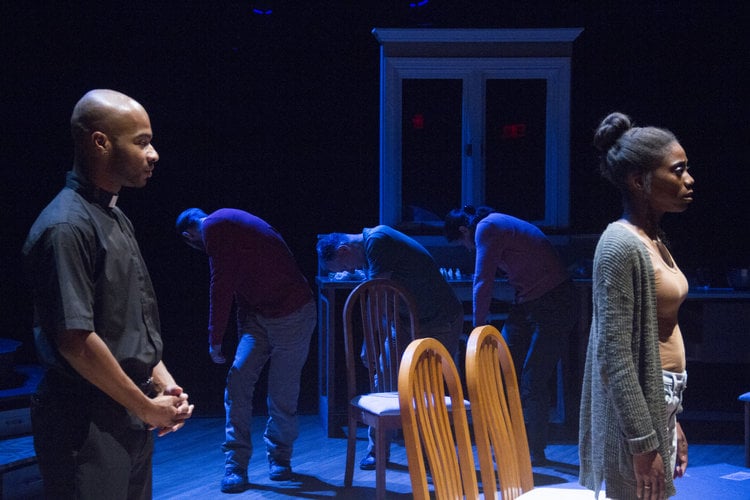Photo by Paul Kruse
As a first year John Wells Directing MFA Fellow at Carnegie Mellon University, I am constantly thinking about storytelling, visibility and voice. I deeply believe centering the stories of queer and trans folks, people of color, and people across the margins is one the most rigorous ways to resist white supremacy and heteronormativity. I make and teach theatre to stir, to heal, to challenge, and to celebrate. As a student, I have been grateful to witness artists from across identities take space and make work. I have been fortunate enough to see multiple performances this year that were a part of reinvigorating my belief in the super human power of the performer.
The first performance I deeply resonated with this year was Becca Blackwell’s They, Themself, and Schmerm. I initially saw their work at The Artists Repertory Theatre in Portland, co-presented by Portland Institute of Contemporary Art as part of their TBA: 17 Festival. They, Themself, and Schmerm is a one-person show embracing and challenging the stand-up form. Similar to other narratives centering trans experiences, They, Themself, and Schmerm includes many stories revolving around bathrooms. From fart jokes, to adolescent dares, to familial crisis, Becca locates the bathroom as a place of hilarity, fear, and humanness. With each story, the bathroom scenes have a growing sense of Becca-ness that make it clear this exact experience could have only happened to this exact human on stage. Becca points out that this is not a trans show, it’s a Becca show. It’s this sense of specificity and Becca’s sheer vulnerability that allows They, Themself, and Schmerm to successfully take the audience from snort-inducing-laughter to genuine human connection.

Becca Blackwell, photo by George Maracineanu
In January, I had the privilege of seeing Panorama, a performance created by Motus at La Mama in New York during The Public’s Under the Radar Festival. Developed from interviews, improvisation and research, Panorama probes into pivotal memories of the people on stage. On one side of the world, a father walks out on his family and demands that his son, backpack in hand, go back to his mother. On the other side of the world in a different time, a father supports his daughter as she changes the film industry in a Muslim country. Patterns and inconsistencies emerge as the stories collide. Animation, dance, music, and cheetos bring to life an infinitely imaginative world dominated by curiosity instead of borders. Panorama playfully and rigorously blurs the possibilities of who we are.

Panorama, photo by Theo Cote
Both of these productions complicated my understanding of the world around me. They made me question, dream, and imagine. Both productions were quite different from one another, but each was comprised of stories about the people on stage. I wouldn't say that any of the performers involved in either production were ever acting or pretending. The stories on stage were about the people right in front of me. It was alarming and refreshing to witness people dynamically exploring their own truth. This kind of work is instrumental to an intersectional and vibrant community. I am inspired to see artists challenging the norm and inviting audiences in to their lived experiences.
If you are interested in reading more about these performances or other shows that I have seen, you can find some more of my writing at https://contemporaryperformance.com/. You can also learn about my artistic practice at http://www.adilmansoor.com/.

This post was written by Arnold Schwab Point Scholar Adil Mansoor.
Adil is currently pursuing an MFA in Directing at Carnegie Mellon University as a John Wells Fellow and will further develop his capacity to honor underrepresented voices. Read more about Adil here.

